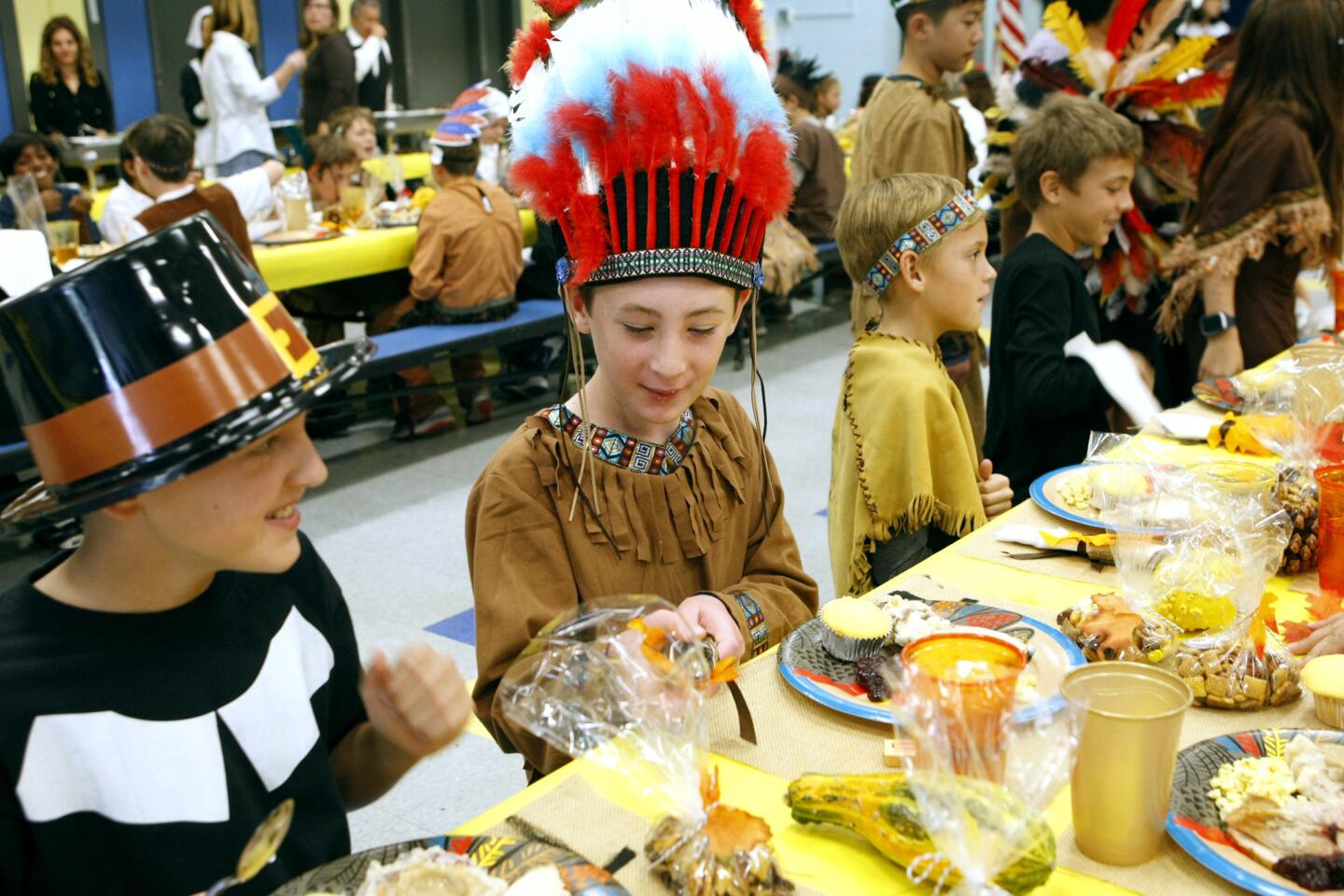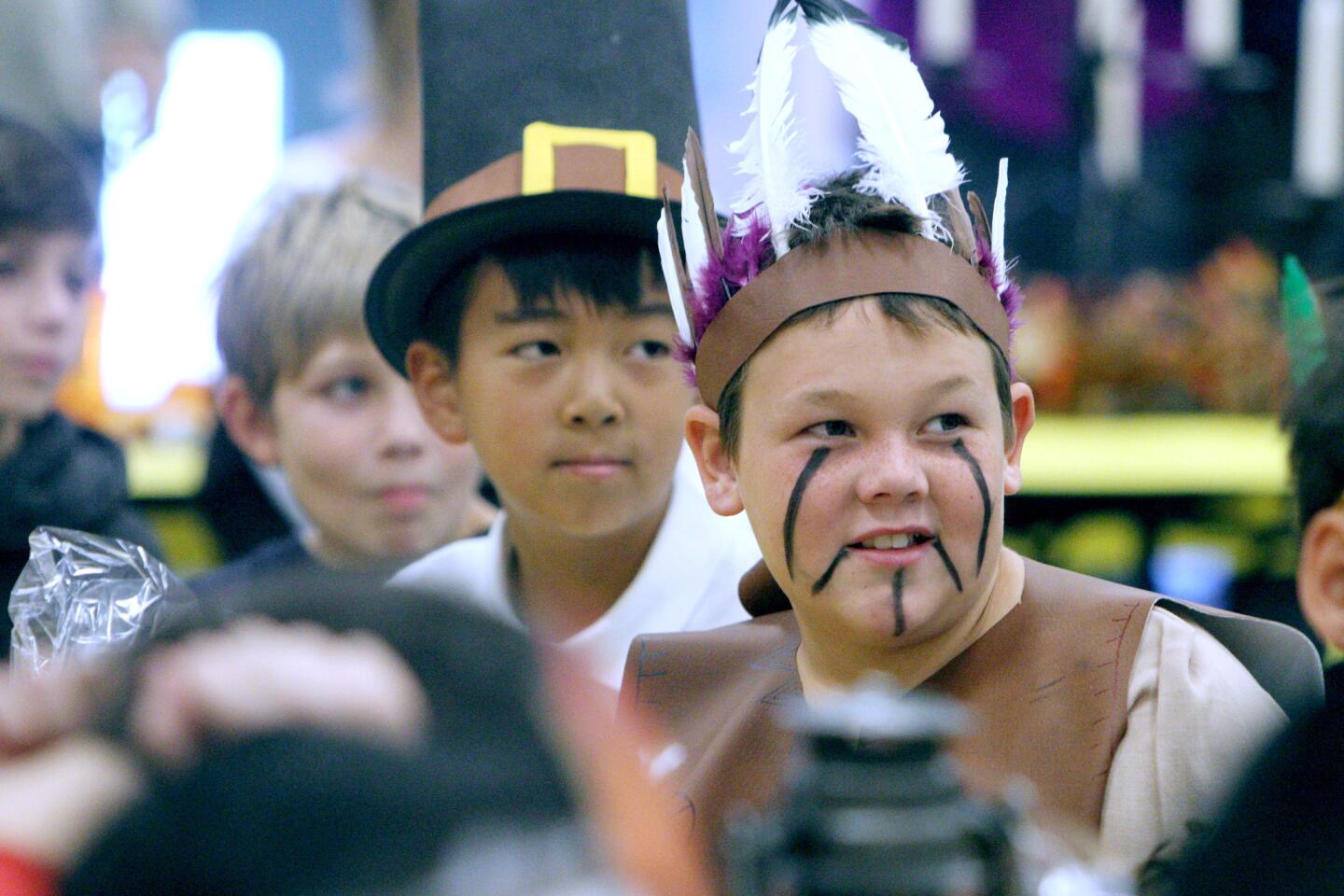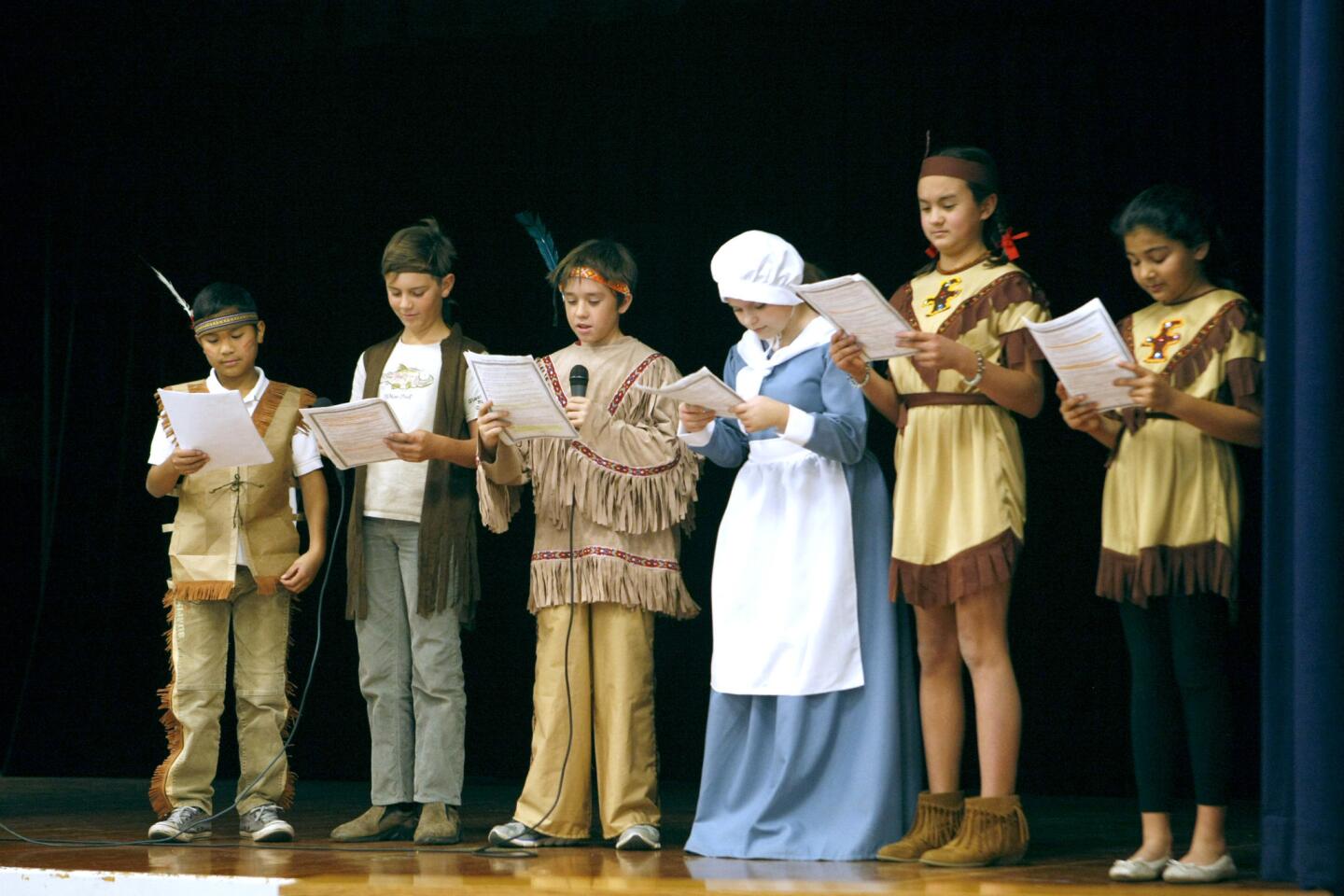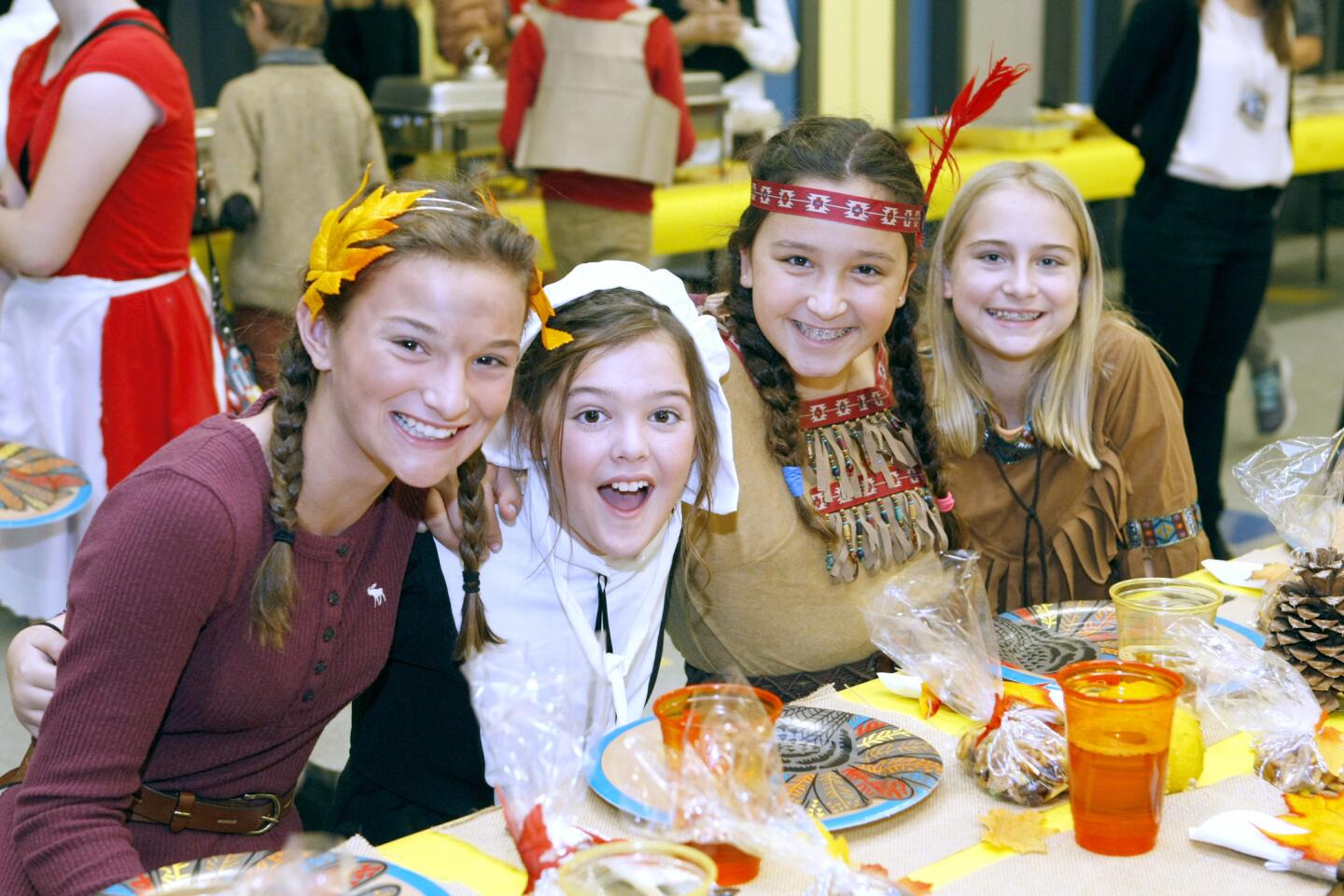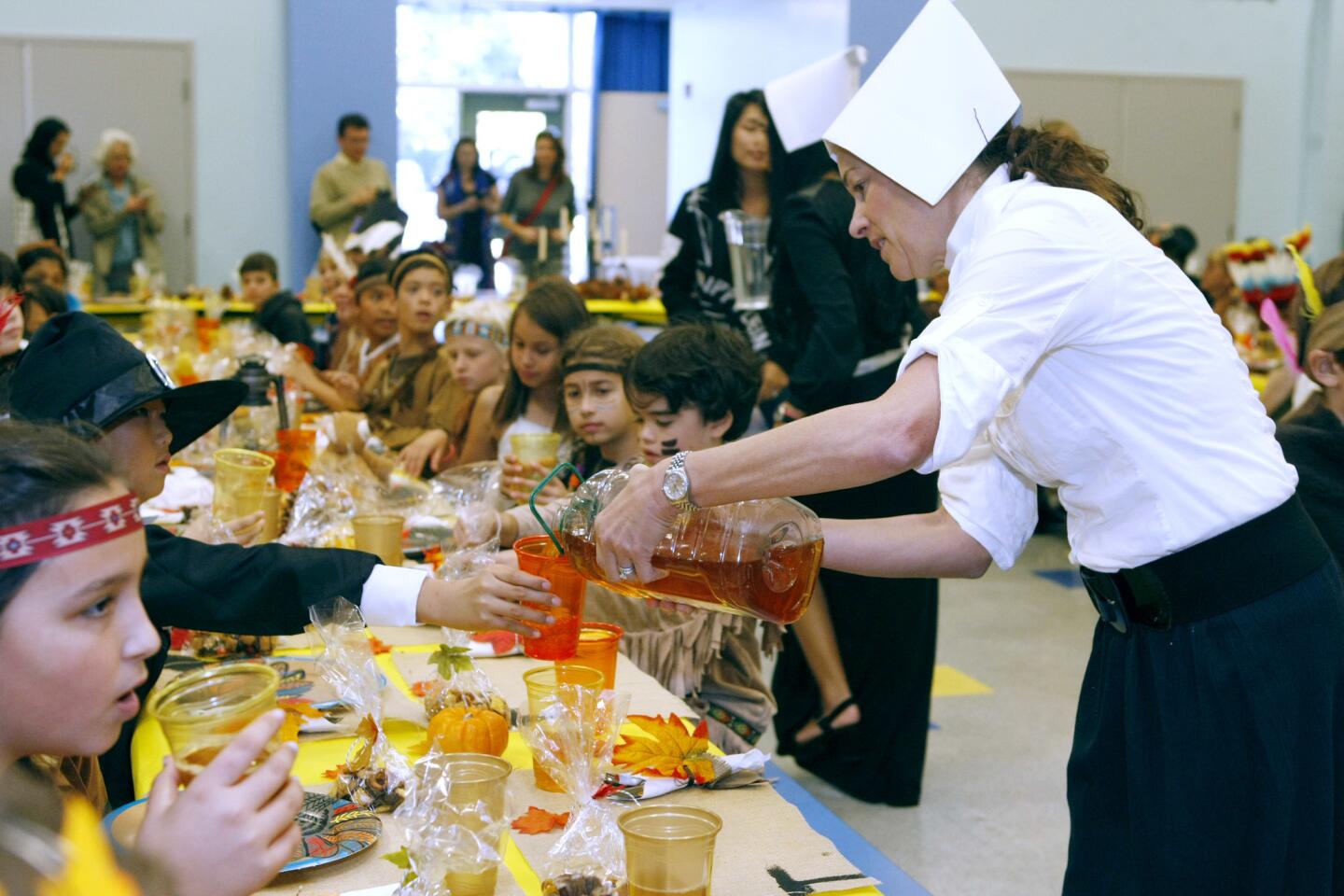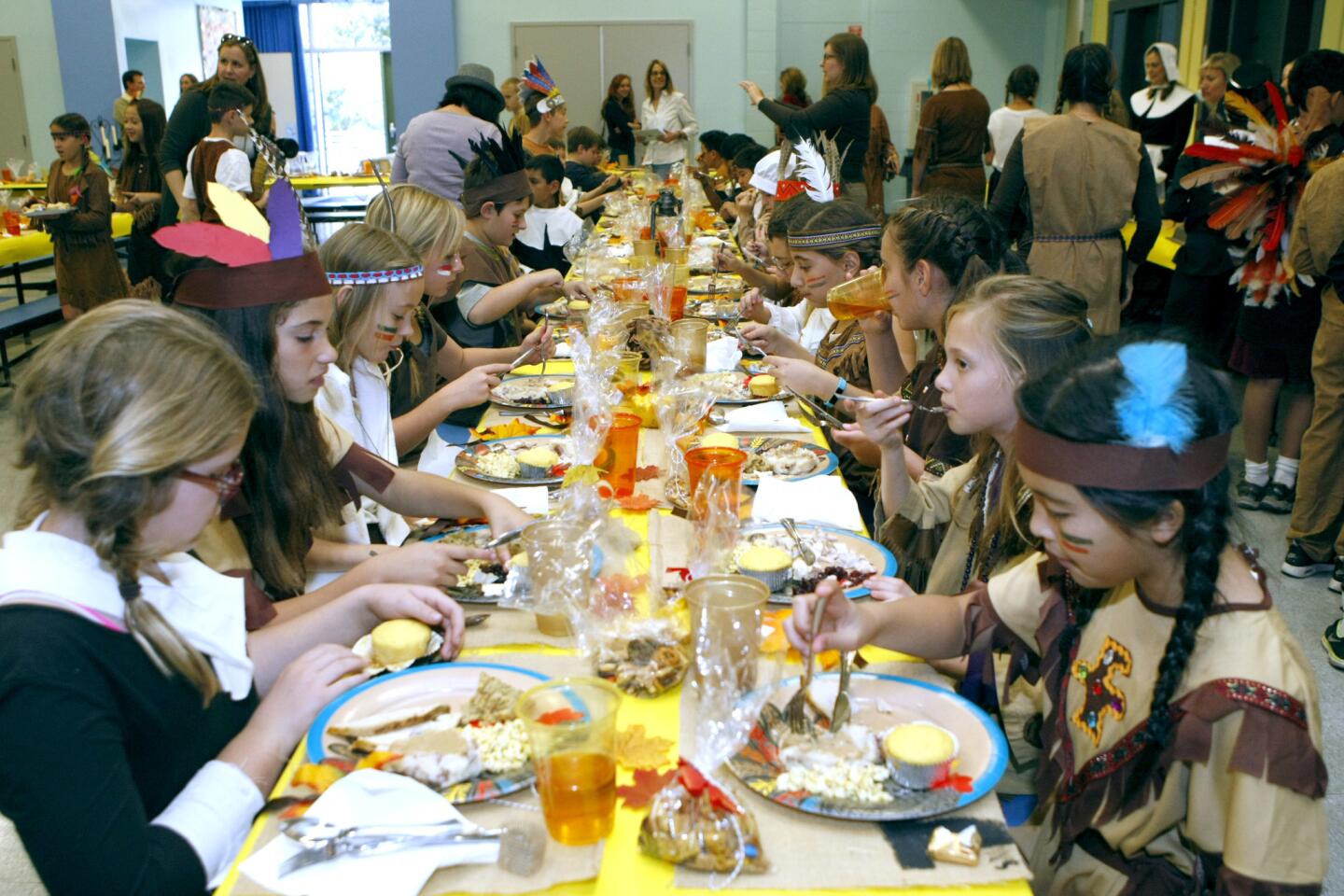La Cañada Elementary School 5th-graders dress the part for traditional Thanksgiving feast
La Cañada Elementary School fifth-graders separated fact from fiction Friday in a feast centered on giving thanks and clarifying a few points about the 1621 meal between America’s European settlers and Wampanoag Indian tribe and the Thanksgiving we celebrate today.
The school’s longstanding tradition invites participants to dress in wide, white pilgrim-style collars and buckles or fringed and beaded wardrobes inspired by America’s first natives as they break proverbial bread and reflect on what the holiday means to them.
Teacher Barb Drange says the “Fifth-Grade Feast” accompanies a grade-level curriculum that introduces students to the precepts of American history. Along with a trip in February to Pennsylvania’s Valley Forge — used as a military encampment during the American Revolution — the feast is a way to engage kids more deeply in the lessons they learn throughout the year.
Join the conversation on Facebook >>

Matthew Plocher, dressed as a pilgrim, left, and Jensen Karlich, dressed as a Native American, right, enjoy the annual fifth grade Thanksgiving lunch at La Cañada Elementary in La Cañada Flintridge on Friday, Nov. 18, 2016.
“It’s American history so we want the kids, as well as people who are visiting, to understand the real Thanksgiving,” Drange said, explaining the school tradition goes back decades. “A lot of our teachers and parents did this in fifth-grade as well and still remember it.”
On Friday, LCE’s cafeteria was decorated with autumnal flair in preparation for this year’s feast, which included songs of gratitude and a student performance about the historical distinctions between the harvest celebration in Plymouth, Mass., and its modern-day equivalent.
“It’s to represent what we give thanks to,” Matthew Plocher, dressed in pilgrim garb, said of the event as he sat down to sup on turkey with all the trimmings. “We give thanks for having all this.”
Seated across from Plocher, a native-attired Jacob Harp recounted what he learned in class about the 1621 celebration.
“[The Indians] heard gunshots and wanted to know what it was,” he said of the day’s festivities 395 years ago. “They helped set it up, because they taught [the settlers] how to farm corn and fertilize it.”
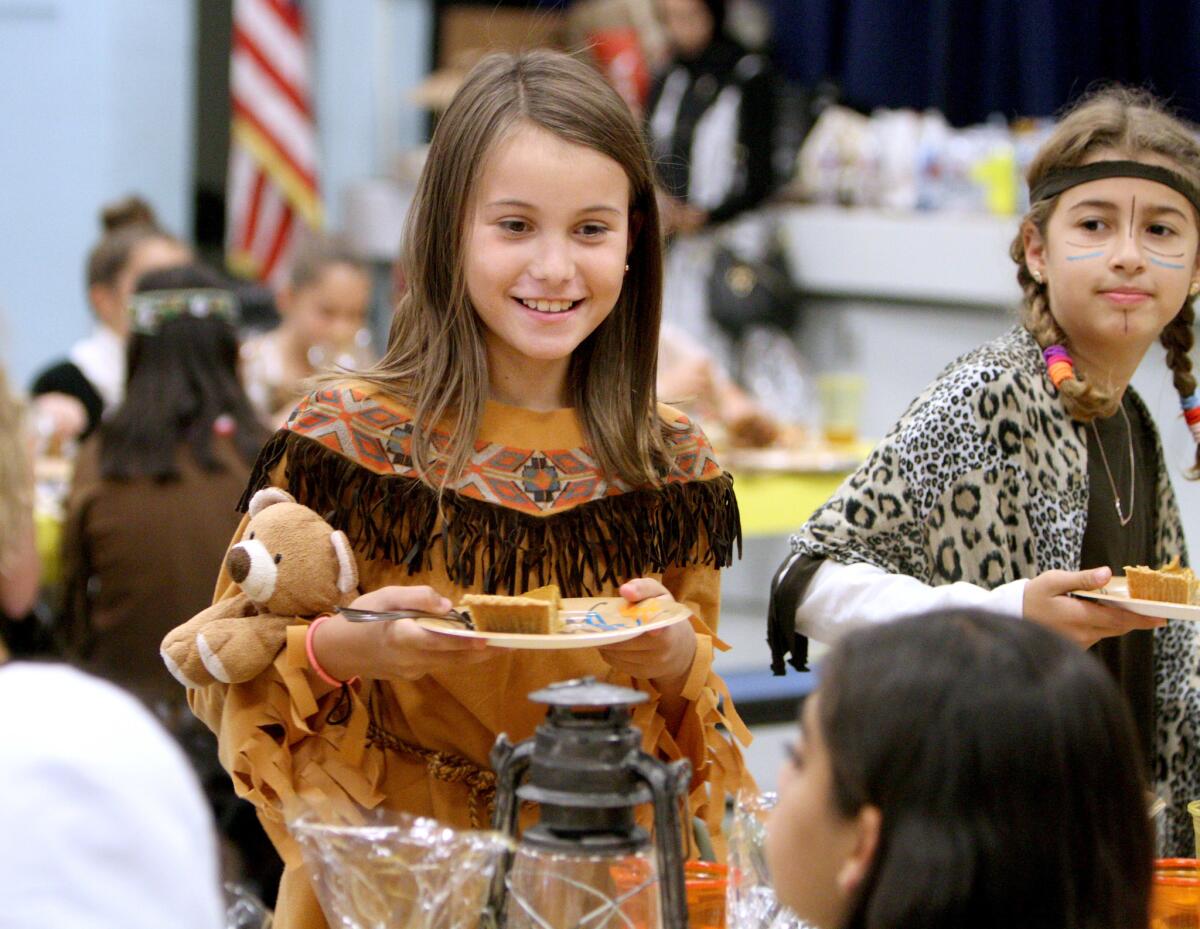
Two tables over, fellow fifth-grader Victora McLurkin said her class has been learning about the complex relationships between early settlers and Native Americans on an ongoing basis.
“They kind of teach us each year a little bit, and then you learn more each year,” said McLurkin who, like many of her female classmates, opted for native-themed dress.
Mother “room rep” Ann-Luu Hohnbaum was among several parents who dished up mashed potatoes, corn and cranberry sauce to hungry students, including her own son, Nathan.
“We’ve heard about the fifth-grade feast since he was in first grade — it’s a milestone,” she said. “It ties in with all the history they’re learning.”
Hohnbaum admitted the curriculum helped stoke her own memories about America’s early history.
“I feel like I know it,” she said. “But it’s good to be refreshed.”
--
Sara Cardine, sara.cardine@latimes.com
Twitter: @SaraCardine
